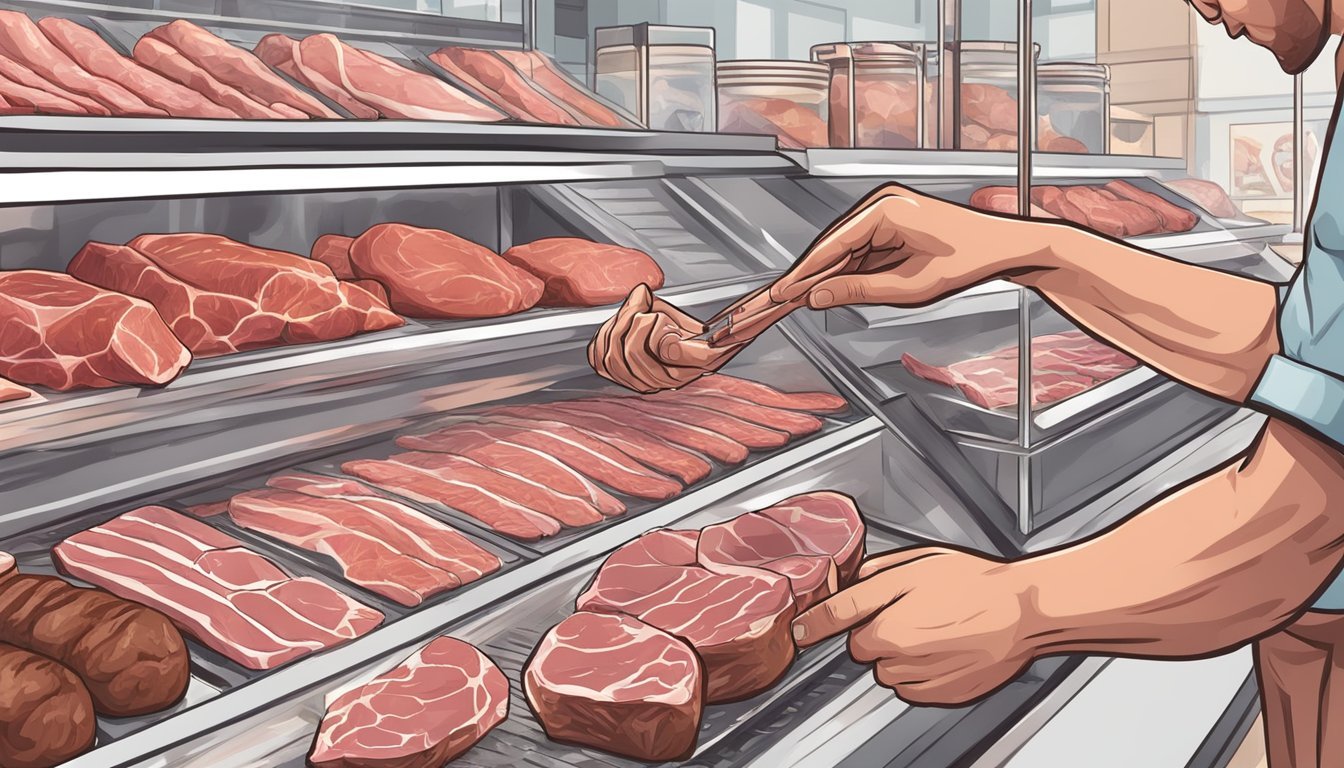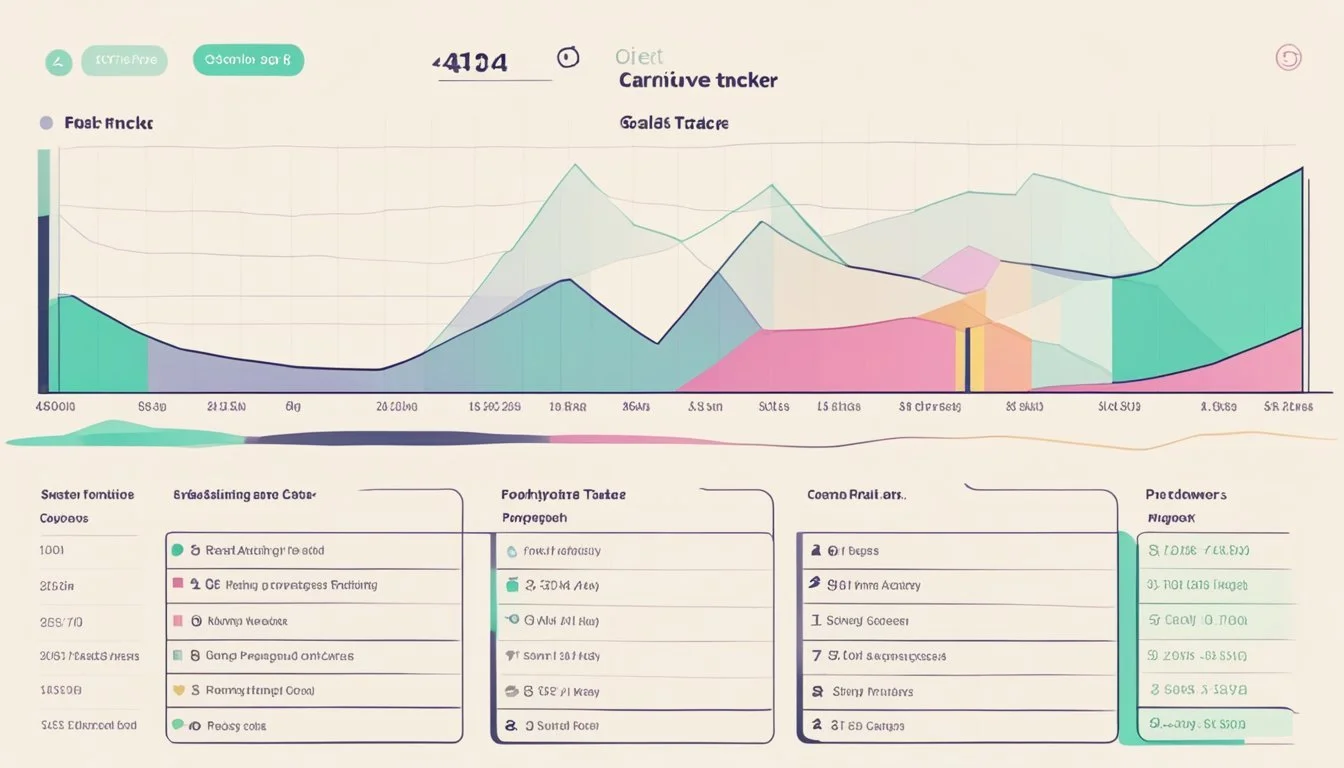Carnivore Diet Hacks
Optimize Your Meat-Only Lifestyle Easily
This Article is Part Of Our Guide on the Carnivore Diet
Embracing a carnivore diet represents a significant lifestyle shift, focusing on natural animal products while excluding carbohydrates. This diet plan advocates for the consumption of purely animal-based foods, positioning meat as the centerpiece of every meal. Those who adopt this way of eating often report benefits such as weight loss and improved energy levels. However, transitioning to a meat-only regimen demands a clear strategy to ensure nutritional needs are met, and the lack of variety doesn't derail one's efforts.
As one eliminates plant foods, processed items, seed oils, and sugars, the diet transforms into a regimen with virtually zero carbs, relying heavily on a range of animal products. This includes not only muscle meats like steaks and burgers but also organ meats, bone broth, and for some, dairy products. It's not merely about the removal of non-animal products but also about maximizing the nutrients from the permitted foods.
Adapting to the carnivore diet requires creativity and understanding, making snack and meal preparation an art to keep things both interesting and nutritionally sound. Whether it's leveraging high-fat content in certain cuts to stay satiated or finding novel ways to prepare traditional dishes, success hinges on recognizing the versatility within the constraints of the diet.
Basics of Carnivore Diet
The carnivore diet focuses on the consumption of animal-based foods and excludes all plant matter. This regime relies heavily on proteins and fats from animal sources for nourishment.
Defining Carnivore Diet
The carnivore diet is a regimen that consists exclusively of animal meat and other animal foods. Individuals on this diet consume a range of meats, including beef, lamb, pork, poultry, and fish, along with animal-derived products such as eggs and dairy. Plant foods are entirely eliminated, which means this diet is devoid of fruits, vegetables, nuts (how long do nuts last?), and seeds.
Benefits of Carnivore Diet
People often pursue a carnivore diet for its potential benefits, which include weight loss and improved mental clarity. Moreover, proponents suggest the diet can reduce inflammation and aid in the management of autoimmune conditions. The diet is rich in nutrients found in animal products, such as B vitamins, iron, and zinc.
Carnivore Diet Principles
The core principles of the carnivore diet are rooted in consuming only animal-based foods and eliminating plant-based foods. A strict adherence means intake of:
Meat: The staple of the diet, which includes ruminant meat like beef, venison, and lamb.
Fatty cuts: Encouraged for their satiety and energy provision.
Organ meats: A source of dense nutrients like vitamins A, D, and various B vitamins.
Fish and seafood: To include omega-3 fatty acids and other key nutrients.
Eggs and dairy (optional): Some include these for additional fat and protein sources.
This high-protein, high-fat diet excludes:
All plant-derived foods
Processed sugars and meats
Any beverages besides water (some also include bone broth)
Subscribers to this diet should drink plenty of water and may opt to include salt and other non-carbohydrate spices to their meats.
Planning Your Meals
When embarking on a carnivore diet, meal planning is essential to maintain variety and ensure all nutritional needs are met. Meal plans are roadmaps to varied and satisfying meals.
Breakfast:
Start the day with high-quality protein to fuel your morning. Opt for:
Eggs: Scrambled, boiled, or as an omelette
Pork Chops: Cooked to your preference
Ribeye Steak (What wine goes well with ribeye steak?): For a satisfying, meaty start
Dinner:
Dinner should be hearty, allowing the individual to experiment with different types of meats.
Lamb: Grilled or roasted
Chicken Breast (What wine goes well with chicken breast?): Grilled, baked, or pan-fried
Ribeye Steak: An excellent choice for a satiating end to the day
Food List:
Keep a food list handy to make shopping efficient. Your list might include:
Various cuts of beef
Pork chops
Lamb
Chicken breast
Organ meats for nutrient density
Meal Variety:
To avoid monotony, individuals can rotate meats and cooking methods. Consider the following preparation styles:
Grilled
Roasted
Pan-seared
Crafting a balanced meal plan within the carnivore diet requires attention to detail. One must ensure ample variety between meat selections and cooking methods to create sustainable and enjoyable eating habits. By sticking to a comprehensive food list and strategic meal preparation, individuals can thrive on a diet rich in animal-based foods.
Selecting Quality Meats
When transitioning to a carnivore diet, selecting high-quality meats is crucial for maximizing nutritional benefits. Individuals should prioritize meats like grass-fed beef, including steaks and ground beef, due to their higher levels of omega-3 fatty acids and conjugated linoleic acid.
Beef liver, rich in vitamins and minerals, is a nutrient-dense choice. It provides an abundance of vitamin A, iron, and essential B vitamins. Similarly, lamb chops (What wine goes well with lamb chops?) present a robust flavor and are excellent sources of protein, zinc, and iron.
Poultry should not be overlooked, with chicken thighs (What wine goes well with chicken thighs?) being particularly favorable for their higher fat content relative to other chicken parts, presenting both flavor and satiety. In contrast, bison (What wine goes well with bison?) offers a leaner alternative with a nutrient profile akin to grass-fed beef.
For those seeking variety, bacon (how long does bacon last?) remains a popular option. However, it’s key to select bacon with minimal additives and a focus on pastured pork for better quality fat.
To ensure a balanced approach, here's a list of quality meat options suitable for a carnivore diet:
Beef: Grass-fed steaks, ground beef.
Organ Meats: Beef and chicken liver.
Poultry: Free-range chicken thighs.
Pork: Pastured bacon.
Game: Bison steaks and roasts.
It's advisable to procure meats from farms employing sustainable practices, enhancing both eco-friendliness and meat quality. Consumers can explore local farmer's markets or online vendors specializing in grass-fed and pasture-raised meats.
Understanding Meat Cuts
Selecting appropriate meat cuts is essential for anyone on a carnivore diet. Different cuts offer varying amounts of protein, fat, and micronutrients critical for this diet's success.
Ribeye steak, a coveted choice within the carnivore community, exemplifies a perfect fat-to-protein ratio. Those seeking a higher fat content should look for untrimmed ribeyes, which include additional fat beneficial for energy metabolism.
For individuals who prioritize incorporating nutrient-dense organ meats, beef heart emerges as an excellent selection. High in protein and rich in vitamins and minerals, it supports muscular health and overall bodily function.
Pork sausages (What wine goes well with pork sausages?) can be a convenient and appetizing option. However, one must ensure they contain minimal additives and fillers to maintain diet purity. High-quality pork sausages typically offer a balance of fat and protein conducive to the carnivore lifestyle.
Incorporating tallow—rendered beef or mutton fat—into meals heightens caloric intake and provides essential fatty acids that can be difficult to obtain solely from lean meats. Tallow is versatile and can be used in cooking or as an added condiment.
Lastly, bone broth is a nourishing supplement popular among carnivore dieters. Rich in minerals and collagen, this broth can improve joint health and digestion. Homemade bone broth, using bones from high-quality meat, ensures a pure and beneficial product.
Ribeye Steak
Benefits: High fat-to-protein ratio
Beef Heart
Benefits: Nutrient-dense, vitamin-rich
Pork Sausages
Benefits: Good balance of fat and protein
Tallow
Benefits: Versatile source of essential fats
Bone Broth
Benefits: Collagen and mineral rich
Choosing the right cuts and understanding their nutritional value helps maintain a sustainable and effective carnivore diet.
Optimizing Nutrient Intake
When embarking on a carnivore diet, one's primary concern should be ensuring adequate intake of essential nutrients. This diet eliminates plant-based foods, requiring careful attention to the sourcing and balance of animal products to maintain optimal health.
Iron and Zinc: Animal products are rich in heme iron and zinc, which are more bioavailable than their plant-derived counterparts. Individuals should prioritize red meats and organ meats, like liver, to maximize the absorption of these minerals.
Vitamin B and B12: Meat, especially organ meat, is a natural source of B vitamins including vitamin B12, which is crucial for nerve function and the production of DNA and red blood cells. Regular consumption of meat can effectively maintain B-vitamin levels.
Selenium: This micronutrient is vital for metabolism and thyroid function. Seafoods such as fish and shellfish (What wine goes well with shellfish?) provide a significant amount of selenium, aiding individuals on a carnivore diet to meet their requirements.
Omega-3 Fatty Acids: Balancing fat intake with an emphasis on omega-3s is important for cardiovascular health. Fish, particularly fatty varieties like salmon, sardines (how long do sardines last?), and mackerel, offer abundant omega-3s which support heart and brain health.
Micronutrients and Minerals: The diet must be planned to ensure a broad spectrum of micronutrients and minerals. Regular inclusion of varied animal products like eggs and some dairy enhances the nutritional profile.
To optimize nutrient uptake, individuals should consider:
Incorporating Organ Meats: Adding small servings of organ meats can vastly improve the intake of essential nutrients.
Balancing Macronutrients: Aim for 0.8-1 gram of protein per pound of body weight and adjust fat intake accordingly, focusing on high-quality fat sources.
Diverse Animal Products: A mix of different meats and fish ensures a more comprehensive nutrient spectrum.
Meal Preparation Techniques
When adopting a carnivore diet, meal preparation is the key to maintaining variety and ensuring nutritional adequacy. Here are some techniques to enhance your carnivore diet meal prep.
Batch Cooking: Dedicate a day to cook larger portions of meat. Carnivore fried chicken strips can be made in bulk and stored in the fridge for several days, making for a quick meal or snack.
Hard-Boiled Eggs: A staple in the carnivore diet, eggs are nutrient-dense and easy to prepare. Cooking them in batches provides a ready supply of protein for snacks or to complement any meal.
Carnivore Cake & Chips: To add diversity, experiment with carnivore flour alternatives to create a satiating carnivore cake. For chips, consider thin slices of chicken skin or liver. Bake until crisp for a satisfying crunch.
Liver Crisps: Nutrient-rich liver can be sliced thinly and dehydrated or baked to create liver crisps. They serve as an iron-packed snack or a tasty addition to meals.
List with preparation techniques for quick reference:
Technique: Batch Cooking
Storage: Refrigerate up to 3 days
Usage: Main or Snack
Hard-Boiled Eggs
Technique: Boil in Batches
Storage: Refrigerate up to 1 week
Usage: Snack or Side
Carnivore Cake
Technique: Alternative Baking
Storage: Eat fresh or freeze
Usage: Dessert
Carnivore Chips
Technique: Bake till crisp
Storage: Air-tight container
Usage: Snack
Liver Crisps
Technique: Dehydrate/Bake
Storage: Air-tight container
Usage: Snack or Garnish
Utilizing these techniques ensures meals remain interesting and time spent in the kitchen is minimized. Storage suggestions contribute to meal diversity over the course of the week, while keeping preparation straightforward and manageable.
Carnivore Diet Recipes
In the realm of carnivore diet recipes, simplicity is key. Individuals on this diet can enjoy a host of satisfying and straightforward meat-based dishes that provide essential nutrients without the addition of plant-based foods. Below is a rundown of some popular carnivore diet options:
Burgers: They can be enjoyed without a bun or paired with leafy greens for those who incorporate minimal plant intake.
Bacon: A staple in the carnivore diet which can be eaten alone or used to add flavor to other meat dishes.
Here’s a quick glance at potential meal options:
Here's a list of meal times along with recipe ideas:
Breakfast:
Bacon
Carnivore Omelette
Lunch:
Carnivore Bar
Dinner:
Ribeye Steak
Carnivore Crisps
For snacks or on-the-go, products like carnivore bars and carnivore crisps offer convenient, high-protein options that comply with the diet's requirements.
Cooking tactics are usually straightforward. Burgers, for example, are best prepared with minimal seasoning — typically just salt — to let the flavor of the meat shine through. When craving variation, ground beef can be transformed into frittatas or even a meatza, where the burger patty serves as the pizza base.
With the carnivore diet, a creative approach is to utilize different cuts of meat and cooking methods to keep meals interesting. Slow-cooked roasts or pan-fried steak offer variety in both texture and flavor. Meanwhile, bacon can be incorporated into these meals for an added savory element.
Addressing Common Challenges
Adopting a carnivore diet can lead to significant changes in one's social and personal life. This section addresses two main issues: navigating social scenarios and coping with food cravings, providing pragmatic strategies for both.
Handling Social Situations
When individuals on a carnivore diet find themselves in social settings, clear communication and preparation are key. They should inform hosts of their dietary restrictions ahead of time and might consider bringing their own food to gatherings to ensure they can stay within the diet's guidelines.
Eating Out: Choose restaurants that cater to meat-centric diets and inform the server of specific needs to prevent any mix-ups.
Social Gatherings: Communicate dietary preferences beforehand or offer to contribute a carnivore-friendly dish to the menu.
Dealing with Cravings
Cravings for non-carnivore foods can be intense during the transition period. Consistency in one's eating habits is critical, and they can use the following approaches to manage cravings:
Structured Meal Times: Eat at regular intervals to maintain satiety and reduce the temptation for snacking.
Satisfying Portions: Consume sufficient quantities of animal-based foods to ensure fullness and lessen cravings for off-diet items.
Supplements and Add-Ons
When adhering to a carnivore diet, individuals may consider including specific supplements and add-ons to ensure nutritional completeness and to enhance the flavor of their meals. The diet primarily consists of animal products, which can be rich in certain nutrients, but might sometimes fall short in providing a full spectrum of vitamins and minerals.
Key Supplements:
Electrolytes: Magnesium, potassium, and sodium are crucial, especially during the initial phase of the diet when water loss can deplete these vital minerals.
Omega-3 Fish Oil: This supplement is beneficial for its anti-inflammatory properties and can help balance the omega-6 to omega-3 ratio.
Vitamin C: Often associated with fruits, Vitamin C is also important for overall health and can be obtained through supplements if not adequately sourced from the diet.
Nutrient-Dense Add-Ons:
Bone Broth: Rich in minerals and collagen, bone broth is both a nourishing supplement and a comforting drink.
Cheese & Heavy Cream: For those not strictly opposed to dairy, cheese, especially Parmigiano, and heavy cream can be good sources of calcium and fat.
Flavor Enhancers:
Spices: Modest amounts of spices can add variety without compromising the diet’s principles.
Vinegar: A splash of vinegar can be useful not just for flavoring but also for its digestive properties.
It is advisable for those on the carnivore diet to tailor their supplements and add-ons according to their specific health goals and nutritional requirements. Bearing in mind that the meat-heavy approach can cover many, but not all, nutrients, individuals should assess their needs periodically, particularly in the context of their overall health and dietary intake.
Transitioning and Adaptation
Adopting a carnivore diet means adjusting to a new way of eating centered primarily on animal products. This section provides practical steps to ease the transition from a ketogenic diet to a fully carnivorous regime and strategies to manage the adaptive phase effectively.
From Keto to Carnivore
The shift from a ketogenic diet to a carnivore diet can be a natural progression, as both diets restrict carbohydrates. However, the carnivore diet eliminates plant-based foods entirely, focusing on meat, fish, eggs, and certain dairy products.
Increase Meat Intake Gradually: Someone transitioning may begin by increasing their intake of fatty meats and reducing their low-carb vegetables and keto-friendly fruits.
Monitor Response: They should observe how their body responds to these changes and make adjustments as needed.
Managing the Transition
During the initial phase of adopting a carnivore diet, individuals often encounter adaptation symptoms as their body adjusts to the change in nutrient sources.
Common Symptoms: Newcomers to the carnivore diet might experience carb cravings, fatigue, digestive changes, and changes in electrolyte balance.
Symptom Management Strategy Carb Cravings They should ensure adequate fat intake to enhance satiety. Fatigue Staying hydrated and maintaining electrolyte balance is key. Digestive Issues One may need to adjust the fat-to-protein ratio accordingly.
Listen to Hunger Cues: It's crucial for individuals to eat until satiety and recognize their body's hunger signals.
By carefully monitoring their body's reactions and employing these strategies, transitioners can smoothly adapt to their new dietary habits.
Tracking Progress and Goals
When an individual embarks on the carnivore diet, monitoring both progress and dietary goals is essential. This process involves regular tracking of body weight and fat mass to gauge weight loss and assessing the intake of macros—proteins, fats, and the minimal carbohydrates present in the diet.
Weight Tracking: One should weigh themselves at the same time each day, preferably in the morning, to maintain consistency. Recording these numbers weekly can help in tracking weight loss trends over time.
Fat Mass: Utilizing a body composition scale or taking measurements can give insights into changes in fat mass. These tools can highlight fat loss even when body weight remains constant due to muscle gain.
Macros Management: While the carnivore diet simplifies eating by focusing on animal products, it is still important to balance macronutrient intake:
Proteins: Essential for muscle repair and growth.
Fats: Necessary for energy and hormone production.
Carbohydrates: Typically minimal, but can be present in dairy or certain organ meats.
Goal Setting: Clearly defined goals act as a roadmap. They might include specific weight loss targets or desired body composition changes.
Body Weight
Tracking Frequency: Weekly
Tools/Methods: Standard Weighing Scale
Body Fat Percentage
Tracking Frequency: Monthly
Tools/Methods: Body Composition Scale
Macronutrient Balance
Tracking Frequency: Daily
Tools/Methods: Food Tracking App
Consistent tracking empowers individuals to make informed decisions about their diet and lifestyle, ensuring alignment with their health goals.
Health Benefits and Risks
Health Benefits:
Weight Loss: Individuals on the carnivore diet may experience initial weight loss due to a decrease in carb intake and an increased metabolic rate from protein digestion.
Reduced Inflammation: Some followers report lower inflammation markers, attributed to the elimination of sugar and processed foods.
Simplicity: The diet is straightforward, focusing solely on animal products, which may aid compliance.
Heart Disease: A diet high in red and processed meats is linked to an increased risk of heart disease due to higher saturated fat and cholesterol levels.
Nutrient Deficiencies: The exclusion of fruits, vegetables, and grains may result in a lack of essential vitamins and minerals.
Food Allergies: Reliance on a single food group can be risky for individuals with allergies to specific animal proteins.
Sleep Quality and Plant-based Diets:
Sleep Quality: Some reports suggest that high meat consumption, particularly red meat, may negatively impact sleep quality due to its digestion requirements.
Plant-based Diets: Contrastingly, plant-based diets are rich in fiber and essential nutrients which are absent from the carnivore diet and are associated with various health benefits.
Considerations:
Individuals with specific health conditions or dietary needs should consult healthcare professionals before starting the carnivore diet.
Inclusion of a diverse range of animal products may help mitigate some risks, such as choosing lean meats and incorporating fish to provide essential fatty acids.
Lifestyle and Long-Term Commitment
Adopting the carnivore diet represents a significant lifestyle shift. Individuals must navigate social settings and personal preferences, adhering to a diet plan centered on animal products while minimizing or excluding plant-based foods. A long-term commitment to the carnivore diet requires a structured meal plan, often comprising meats, seafood, eggs, and select animal products such as dairy and bone broth.
Meal Planning:
Meats: Beef, pork, lamb, chicken
Seafood: Fish, shellfish
Eggs: Chicken, duck
Dairy: (Optional) Cheese, butter
One's daily routine often changes to accommodate the simplicity of the diet, with individuals eating to satiety and not counting calories. However, sustaining this diet long-term raises questions about nutrient diversity and the need for careful consideration to avoid potential deficiencies.
Challenges and Considerations:
Social Challenges: Adapting to dietary restrictions during social gatherings
Nutritional Adequacy: Ensuring all essential nutrients are obtained
Health Monitoring: Regular check-ups to monitor health markers
Those dedicated to maintaining the carnivore diet as a lifestyle must be mindful of their body's signals, possibly requiring supplementation or periodic health assessments.
It's crucial for individuals to research and understand the implications of any diet. The carnivore diet's sustainability as a long-term lifestyle choice remains under investigation, with limited research on its prolonged effects.







